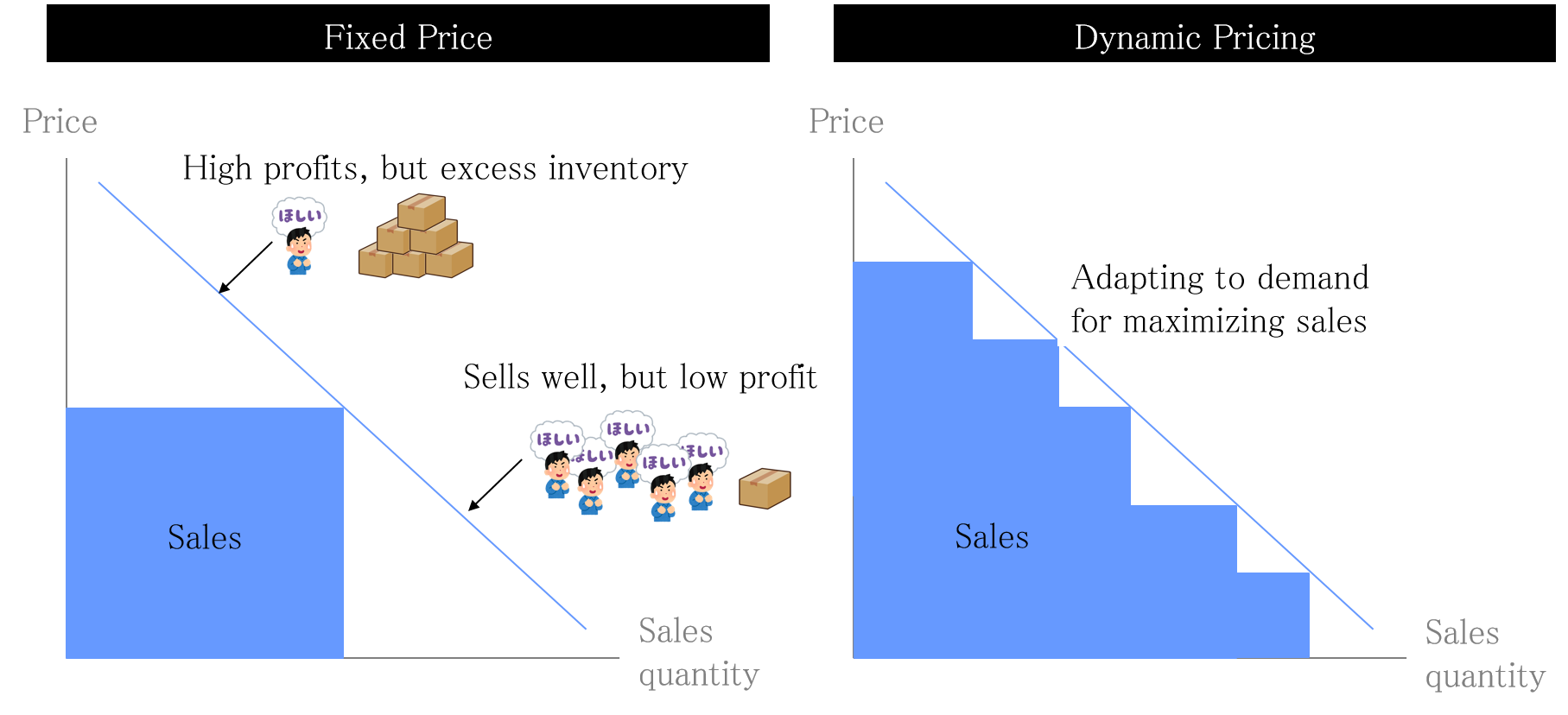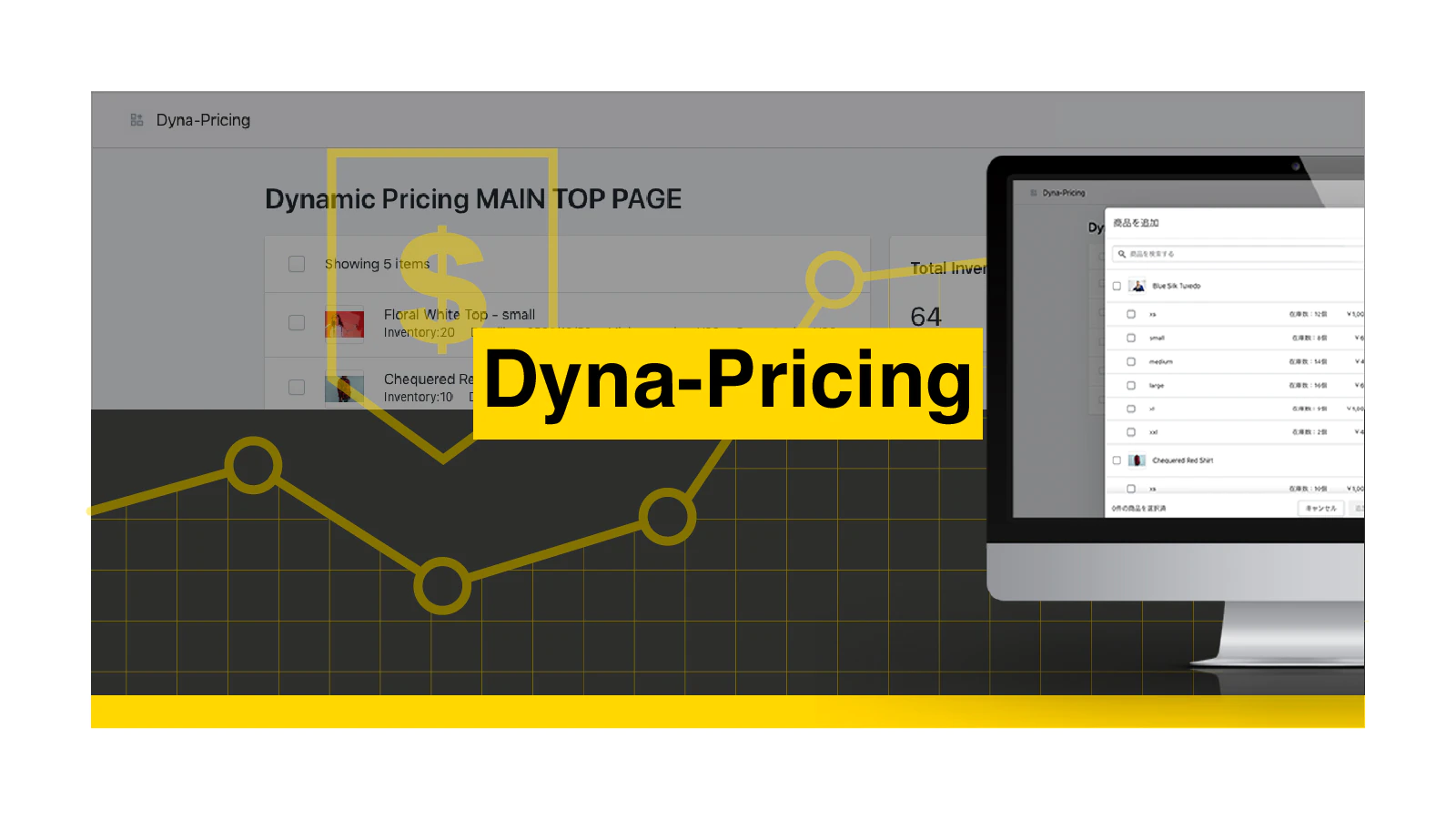What is Dynamic Pricing? It refers to the practice of adjusting prices based on the demand for a product. For example, when a product is not selling well, the price may be reduced to stimulate sales. Conversely, when the product is selling too well and there is a risk of running out of stock, the price may be increased to maximize profits.
Effectively utilizing dynamic pricing offers several advantages compared to traditional fixed pricing.
- Increased sales
- Reduction in excess inventory
Let's explore the reasons for each.
The fundamental premise is that different people have different perceived values for a product. For instance, some might be willing to buy a plane ticket to Thailand for ¥100,000, while others may only consider purchasing if it's priced below ¥50,000. Generally, as illustrated in the graph, more people tend to buy when the price is lower, and fewer people buy when the price is higher. The product of price and quantity sold represents the sales.

In the case of fixed pricing, if there are no buyers at the set price, the product won't sell, necessitating a price reduction. Conversely, if there are people willing to buy at a higher price, increasing the price can lead to higher sales. Dynamic pricing allows for adjusting prices based on the demand for the product. For example, if a product isn't selling for a while, the system can automatically reduce the price to increase sales. Conversely, when the product is selling well, raising the price can increase the revenue per unit, ultimately leading to increased overall sales.
This scenario arises when the price is too high, resulting in unsold products and excess stock. Dynamic pricing allows for lowering prices when excess inventory is anticipated, facilitating inventory clearance.
Dynamic pricing is well-suited for products with a limited lifespan. For example, products like:
- Airplane tickets
- Event tickets
- Hotels
- Rental cars
- Seasonal apparel
- Perishable food items such as fruits, fish, and vegetables
Products like airplane or event tickets lose value after the flight or event date, requiring sales before that time. Additionally, as the event date approaches and inventory decreases, prices tend to rise. Such products, with fluctuating values based on timing, are well-suited for dynamic pricing. Similarly, hotel rooms typically require advance reservations for specified dates, and their value diminishes after the reserved date, making them suitable for dynamic pricing. Seasonal changes in apparel and perishable food items also make dynamic pricing effective.
Notable successes in dynamic pricing include ride-sharing service Uber and hotel reservation service OYO. For instance, OYO's dynamic pricing algorithm analyzes 140,000 data points every hour, makes 60 million price changes daily with 97% accuracy, maximizing revenue per room.
So, how can you implement dynamic pricing to maximize sales? If you are running a business on the Shopify e-commerce platform, simply installing our Dyna-Pricing app allows AI to automatically calculate optimal prices, maximizing sales.
Customization for systems other than Shopify is also possible. Feel free to contact us if you are considering dynamic pricing.
